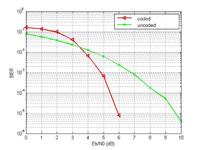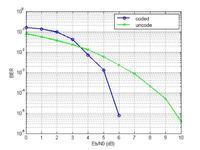byakuya
Junior Member level 3
hi, i've tried to simulate FEC and i got negative value when i calculate difference benween uncoded system and coded system ? (maybe i use FEC at unsuitable application)
can i expressed it as coding gain = -X dB?
can i expressed it as coding gain = -X dB?



